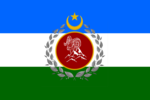
The Indian Army is the land-based branch and the largest component of the Indian Armed Forces. The President of India is the Supreme Commander of the Indian Army, and its professional head is the Chief of Army Staff (COAS), who is a four-star general. Two officers have been conferred with the rank of field marshal, a five-star rank, which is a ceremonial position of great honour. The Indian Army originated from the armies of the East India Company, which eventually became the British Indian Army, and the armies of the princely states, which were merged into the national army after independence. The units and regiments of the Indian Army have diverse histories and have participated in several battles and campaigns around the world, earning many battle and theatre honours before and after Independence.

Baltistan, also known as Baltiyul or Little Tibet, is a mountainous region in the Pakistani-administered territory of Gilgit–Baltistan. It is located near the Karakoram and borders Gilgit to the west, China's Xinjiang to the north, Indian-administered Ladakh to the southeast, and the Indian-administered Kashmir Valley to the southwest. The average altitude of the region is over 3,350 metres (10,990 ft). Baltistan is largely administered under the Baltistan Division.
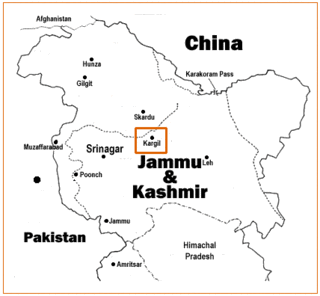
The Kargil War, also known as the Kargil conflict, was an armed conflict fought between India and Pakistan from May to July 1999 in the Kargil district of Jammu and Kashmir and elsewhere along the Line of Control (LoC). In India, the conflict is also referred to as Operation Vijay, which was the name of the Indian military operation to clear out the Kargil sector. The Indian Air Force's role in acting jointly with Indian Army ground troops during the war was aimed at flushing out regular and irregular troops of the Pakistan Army from vacated Indian positions along the LoC. This particular operation was given the codename Operation Safed Sagar.

Havaldar Lalak Jan was a soldier of Pakistan Army belonging to Northern Light Infantry regiment. He was killed in action during the Kargil war. For his bravery, he was awarded Pakistan's highest military gallantry award, Nishan-e-Haider. Lalak Jan hailed from Yasin Valley, village name Hundur, in Gilgit-Baltistan which is a province of Pakistan.

The Jammu and Kashmir Rifles is an infantry regiment of the Indian Army. Its origins lay in the Jammu and Kashmir State Forces of the princely state of Jammu and Kashmir. After the accession of the state to the Indian Union in October 1947, the State Forces came under the command of the Indian Army. They remained in the original form until 1956 when Jammu and Kashmir Constituent Assembly effectively ratified the state's accession to India. Then the State Forces became the Jammu and Kashmir Regiment of the Indian Army. In 1963, the designation was changed to Jammu and Kashmir Rifles. After the conversion, the Ladakh Scouts came under the aegis of the Regiment, where it remained until raised as a separate Regiment in 2002.
The Paramilitary forces of Pakistan consist of various uniformed organizations that are sanctioned by the Pakistani constitution and government. The paramilitary forces are responsible for maintaining internal peace and security, helping local law enforcement agencies, and carrying out border patrol, counter-insurgency, counter-terrorism, riot control and anti-smuggling operations under the Ministry of Interior. The paramilitary forces not formally a part of Pakistan Armed Forces, but sometimes working alongside them to provide security and relief in response to natural disasters. The paramilitary forces come's under the direct command of Ministry of Defense and Armed Forces in War times.
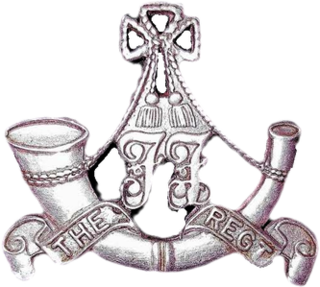
The Frontier Force Regiment or KPK Force Regiment is one of six infantry regiments of the Pakistan Army. They are popularly known as the Piffers in reference to their military history as the PIF of the British Indian Army, or as the FF. The regiment takes its name from the historic North-West Frontier, a former province of British India and later Pakistan.
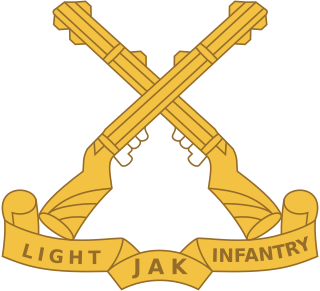
The Jammu and Kashmir Light Infantry is an infantry regiment of the Indian Army. The regimental center is in Srinagar's Airport Complex at Awantipora with a winter setup near Jammu. Its regimental insignia consists of a pair of crossed rifles. The regiment mostly consists of volunteers from the state of Jammu & Kashmir and ethnic groups from the state. The Jammu and Kahmir Light Infantry is considered to be one of the most decorated regiment of the Indian army having won 1 Param Veer Chakra and 3 Ashok Chakra. Naib Subedar Chuni Lal of the 8th battalion Jammu and Kashmir Light Infantry is one of the most decorated personnel of the Indian Army.

General Muhammad Aziz KhanNI(m), HI(m), SBT, TBt, best known as Aziz Khan, is a retired four-star rank army general in the Pakistan Army who served as Chairman of the Joint Chiefs of Staff Committee, appointed in October 2001 until his retirement in 2005.

The Siachen conflict, sometimes referred to as the Siachen Glacier conflict or the Siachen War, was a military conflict between India and Pakistan over the disputed 1,000-square-mile (2,600 km2) Siachen Glacier region in Kashmir. The conflict was started in 1984 by India's successful capture of the Siachen Glacier as part of Operation Meghdoot, and continued with Operation Rajiv in 1987. India took control of the 70-kilometre-long (43 mi) Siachen Glacier and its tributary glaciers, as well as all the main passes and heights of the Saltoro Ridge immediately west of the glacier, including Sia La, Bilafond La, and Gyong La. Pakistan controls the glacial valleys immediately west of the Saltoro Ridge. A cease-fire went into effect in 2003, but both sides maintain a heavy military presence in the area. The conflict has resulted in thousands of deaths, mostly due to natural hazards. External commentators of have characterized it as pointless, given the perceived uselessness of the territory, and indicative of bitter stubbornness on both sides.
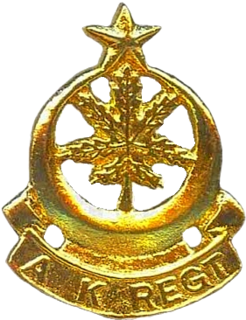
The Azad Kashmir Regiment, also known as AK Regt, is one of the six infantry regiments in the Pakistan Army. As per the order of seniority, it is the fourth regiment, but was the first to be raised after the independence of Pakistan from British colonial rule. Its regimental Centre is located at Mansar camp in Attock District, on the border of Punjab and KPK provinces. The regiment has participated in all major and minor operations and wars fought by the army. Notable commanders of the regiment include lieutenant general Haroon Aslam, an ex-commander of Pakistan Army Special Service Group who led the SSG operation in Swat in 2009, and lieutenant general Hidayat ur Rehman, who commanded Operation al-Mizan and operation Zarb e Azab in FATA from 2014 to 2016.

The Kargil War order of battle (KWORBAT), is a deposition and systematic combatant structure of the Indian Army troops and the unified Pakistan Armed Forces combat commands, active in the Kargil region in 1999, during the Kargil War. The Indian Army orbat is based on the publications provided by the Indian military authors, news media and official sources.

Kargil Vijay Diwas is commemorated every 26 July in India, to observe India's victory over Pakistan in the Kargil War for ousting Pakistani Forces from their occupied positions on the mountain tops of Northern Kargil District in Ladakh in 1999. Initially, the Pakistani army denied their involvement in the war, claiming that it was caused by Kashmiri militants forces. However documents left behind by casualties, testimony of POWs and later statements by the Prime Minister of Pakistan Nawaz Sharif and Pakistan Army Chief of Army Staff Pervez Musharraf showed the involvement of Pakistani paramilitary forces, led by General Ashraf Rashid.
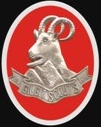
The Gilgit Scouts constituted a paramilitary force of the Gilgit Agency in northern Jammu and Kashmir. They were raised by the British Raj in 1913, on behalf of the princely state of Jammu and Kashmir, to police the northern frontier of India.
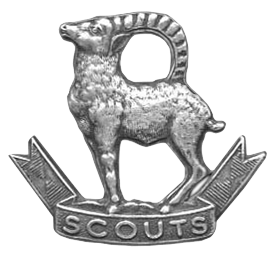
The Ladakh Scouts is an infantry regiment of the Indian Army, nicknamed the "Snow Warriors" or "Snow Leopards". The regiment specialises in mountain warfare, and its primary role is to guard India's borders in the high altitudes of the Union Territory of Ladakh.

Gilgit Baltistan is an administrative territory of Pakistan, disputed by India that borders the province of Khyber Pakhtunkhwa to the west, Azad Kashmir to the southwest, Wakhan Corridor of Afghanistan to the northwest, the Xinjiang Uyghur Autonomous Region of China to the north, and the Indian administrated region of Jammu and Kashmir to the south and southeast.

The Chitral Scouts (CS), also known as Chitral Levies, originally raised in 1903 as the militia of the princely state of Chitral, is now a unit of the federally controlled Frontier Corps of Pakistan. Recruited mostly from the Chitral and Kalash Valleys areas along the western borders and led by officers from the Pakistan Army. The Frontier Corps of Khyber Pakhtunkhwa falls under the control of the Ministry of the Interior. Its headquarters is at Chitral town, and it is commanded by a Colonel of the Pakistan Army.
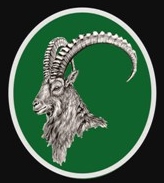
The Gilgit−Baltistan Scouts are part of the Paramilitary forces of Pakistan, under the direct control of the Ministry of the Interior of the Pakistan Government. The Scouts are an internal and border security force with the prime objective to protect the China–Pakistan border and support Civil Administration in ensuring maintenance of law and order in Gilgit-Baltistan and anywhere else in Pakistan. The force was formerly known as the Northern Areas Scouts but was renamed to the Gilgit−Baltistan Scouts in 2011 due to the imposition of "Empowerment and Self Governance Order" in 2009.

Brigadier Muhammad Aslam Khan (1918–1994) was a Pakistani military officer, who led the Gilgit Scouts and Azad rebels in the First Kashmir War. Using the nom de guerre of 'Colonel Pasha', he organised a force of 1200 rebels and local recruits in Gilgit, and led an attack on the Indian Army and the State Forces from the north, conquering Skardu and Kargil and advancing within 30 miles of Leh. Even though the Indian Army eventually repulsed the attack beyond Kargil, Skardu remained part of the rebel territory, coming under Pakistani control at the end of the war.
Yaldor Sub Sector was the scene of some of the major infiltration by Pakistani Northern Light Infantry battalions and some of the major battles of Kargil War were fought here. The sub sector basically covers Yaldor, a small village in the Indus river basin in the Leh district of Ladakh in India, and Yaldor nullah. The village located in the upper reaches of the mountains near the Line of Control that divides the Indian- and Pakistan-administered Kashmir, the village abuts the Yaldor nullah. The area was a focal point during the Kargil War because of its strategic location between Kargil, Leh and Baltistan. Only a few shepherd families live in Yaldor village, they spend their summers here and then spend their winters in Garkhun, taking their livestock with them. One of the shepherds from Garkhun, Tashi Namgyal, who was looking for his missing yak was the first to report about infiltrators from Pakistan on 3 May 1999 to Indian Army. The village has an army patrol base, which was set up in 1997 even before the Kargil infiltration of 1999. As of 2019, the village is out of bounds for tourists.

